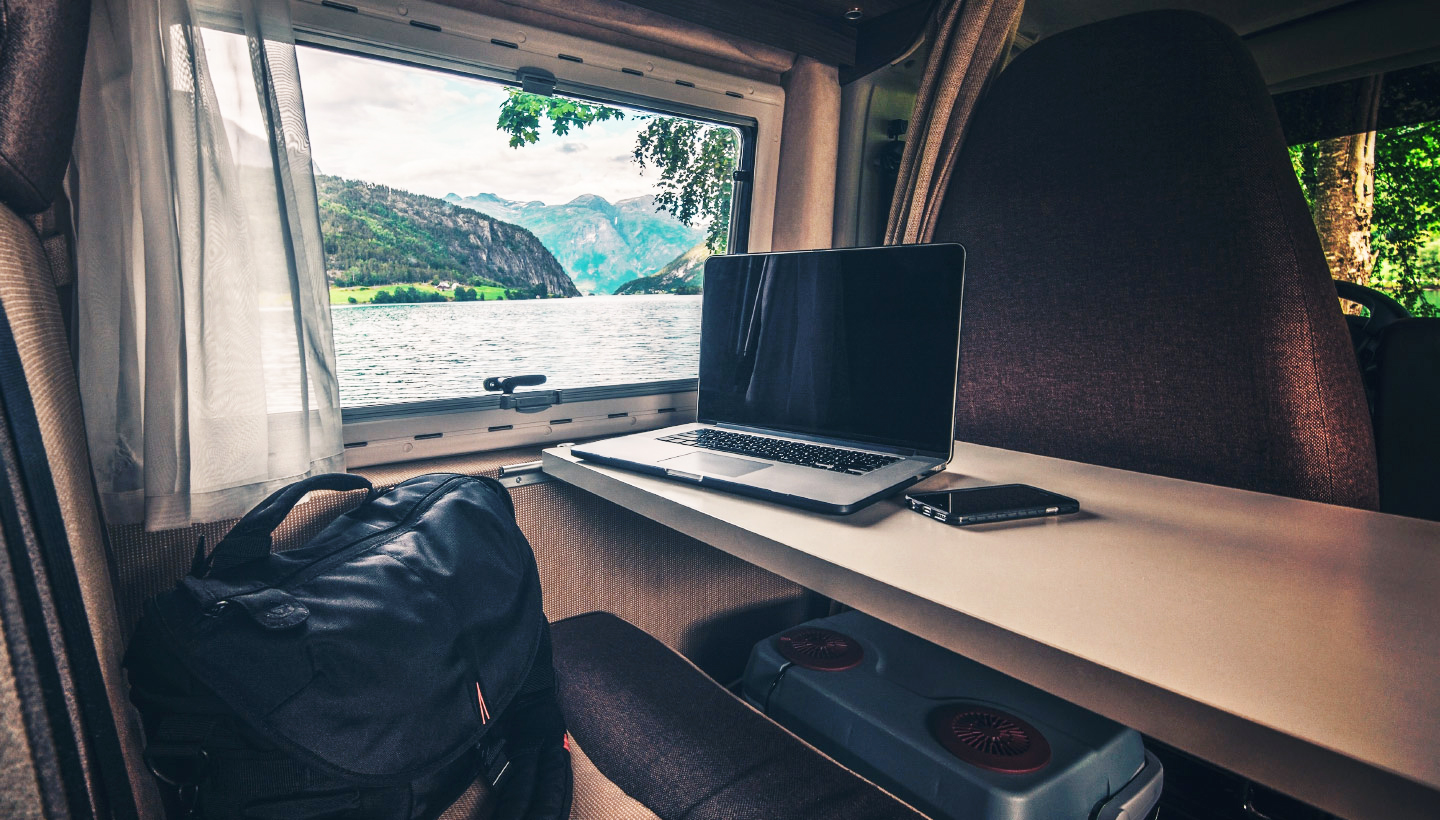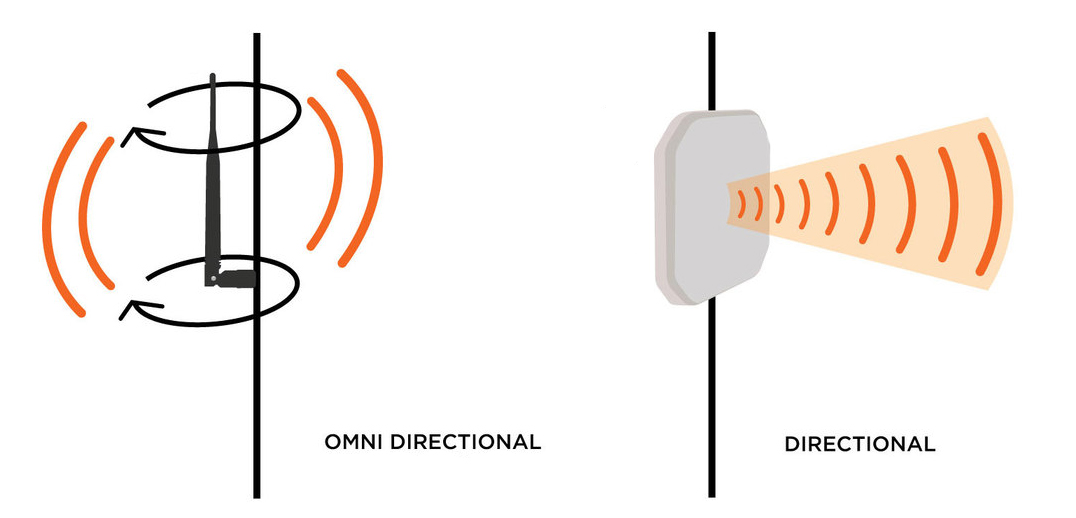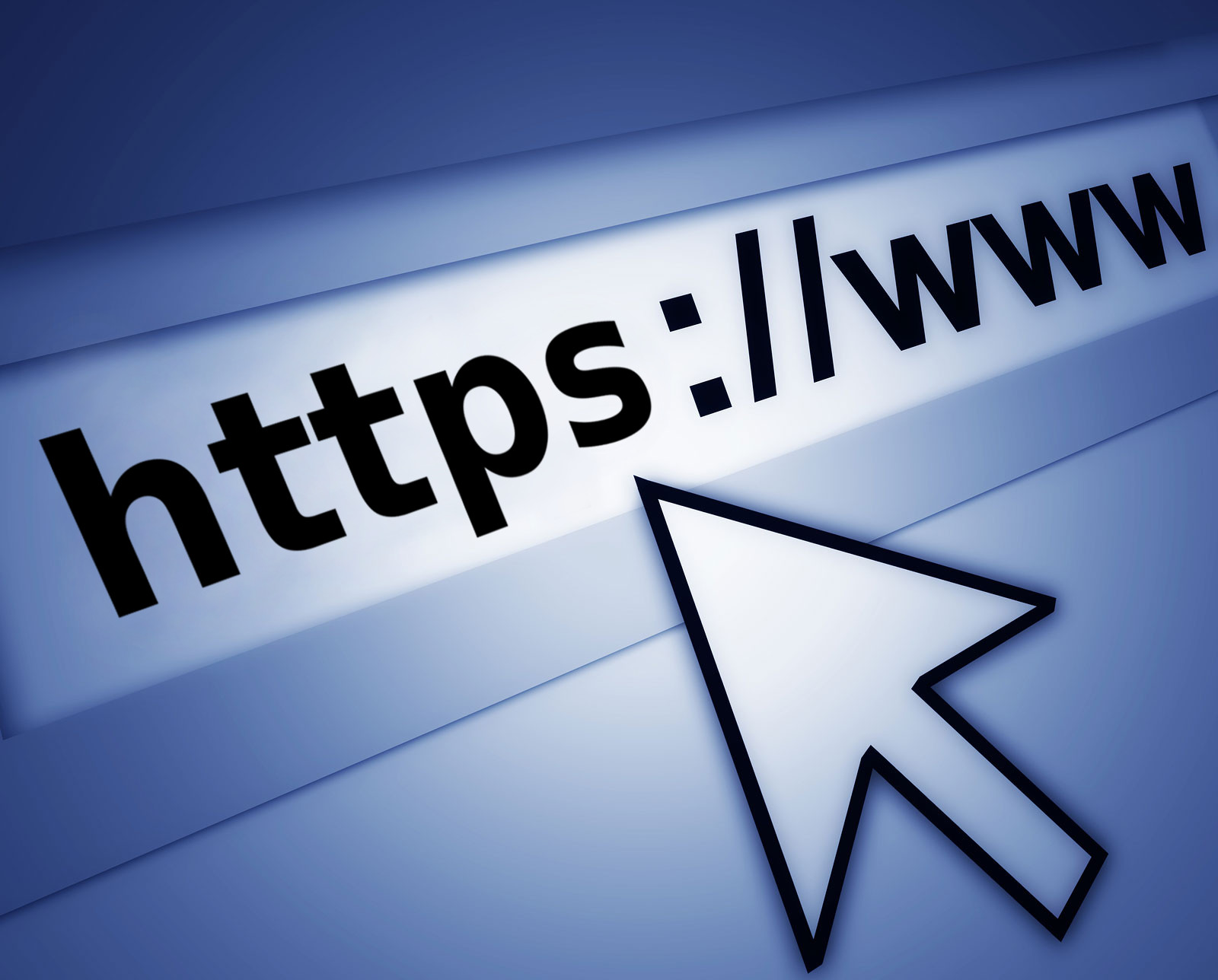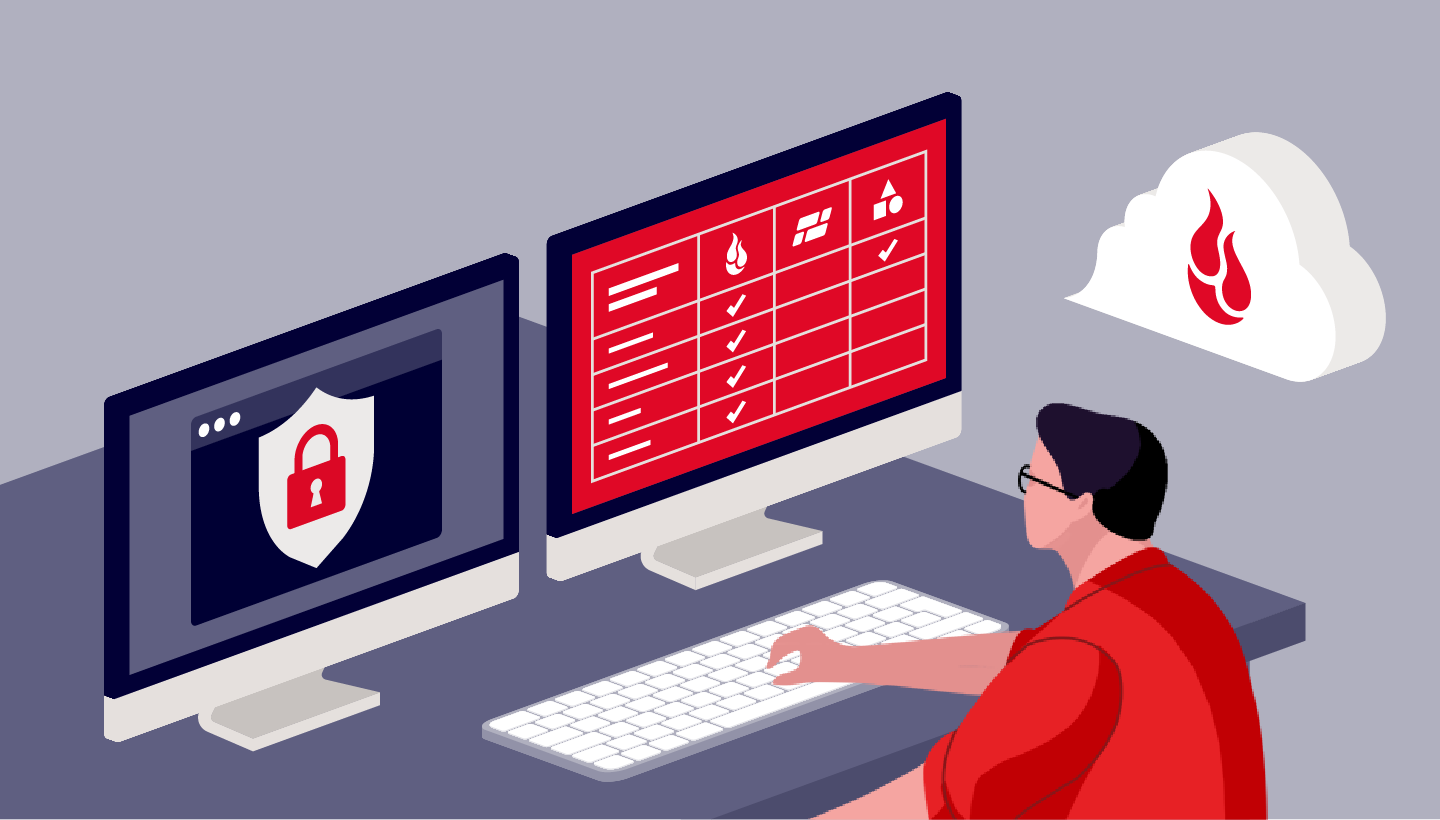
The open road has always held an allure of adventure and rebellion. Whether perched on an Indian or Harley-Davidson motorcycle, laid back in an old Chevy truck or a VW van, or sailing a sloop downwind to French Polynesia, who hasn’t daydreamed about breaking away from the daily slog?
Escaping the rat race used to mean separating from traditional employment as well as communication with the rest of the world. There were few jobs, other than those based on special skills and alternative lifestyles, that allowed for a road warrior lifestyle lived far from a business office or a city.
The New Era of Digital Nomads
That’s all changed. With the abundance of internet broadband available through Wi-Fi or cellular connections, we can now travel almost anywhere in the populated world and have access to family, clients, banking, shopping, cloud data, and the other digital services required just to get by in today’s society.
Programming, writing, photography, videography, and piece-work consulting are all naturally suited to a new, peripatetic lifestyle, and many in those fields are models of what a working nomad can do away from traditional work environments. But technologies like 5G and X Reality (XR) are opening the door to intricate tasks that in the past could only be performed in person. Procedures as demanding as remote surgery are now possible using telepresence technology. Who knows what skills and jobs will be able to done from thousands (or even millions of miles) away in the future? After all, today the Mars Rover can be driven by an operator in Pasadena, California.
Combine these new technologies with people’s imagination and creativity, and we can expect the number of people who live and work on the road to explode in coming years.
Our Series on Digital Nomads
In this blog series we’ll explore how you can master the nomadic life — whether for a long weekend, an extended working vacation, or maybe even the rest of your career. We’ll profile some professionals we’ve met who are stretching the boundaries of what (and where) an office can be, and glean lessons along the way to help you to follow in their footsteps.
We’ll be concentrating on those nomads whose needs include heavy data usage, such as videographers and other media and entertainment producers, IT professionals, and anyone else who needs the internet for more than just checking their email and social media and uploading photos from their travels.
Tell Us Your Story of Staying Connected on the Road
If you have a story you’d like to tell about working from the road (or water, air, or wherever you might be), or useful tips about how you make that lifestyle work, we’d love to hear from you. See our invitation at the bottom of this post for how to contact us.
Practical Tips for Digital Nomads
Before we launch our series of profiles, we’d like to offer a quick selection of tips for any of you considering this lifestyle for yourself. These are just the basics, and we hope you’ll offer your own suggestions in the comments. We’ll update this post with your ideas.
Staying Connected on the Road or Water
Internet connectivity is of course near the top of the list of required utilities for digital nomads. Just four years ago, Backblaze’s CEO Gleb Budman wrote a post about working on the road and gave some tips for how to do it. Many of Gleb’s recommendations are evergreen, but given how far the technology has progressed in four years, we should review the essentials for how to stay connected.
Tip #1 — Plan Ahead to Have the Services You Need
Planning ahead is probably our most important tip. While there are usually plenty of ways to stay connected en route, you’re going to want to be certain to find a reliable connection at your next stop, and planning ahead is the best way to ensure that you do. Take advantage of books, articles, and online guides that direct you to the best places to find Wi-Fi and good cellular service.
Coffee shops, libraries, and restaurants can be good bets for connecting, but the bandwidth is likely to be limited and not usable for large uploads. They sometimes don’t allow VPNs and block anything other than web browsing. Paid internet cafes usually provide better bandwidth at a price. If you use the Wi-Fi guides we mention in this post, you’ll be prepared to go directly to the location best suited to your needs.
Planning Tips:
- Lifewire has a good, recent post on how to stay connected while traveling, and Lonely Planet wrote a detailed post on this topic.
- Most travel guides and online sites now include information about where Wi-Fi is available. Lonely Planet guidebooks, for example, include Wi-Fi locations.
- Use mobile apps that help you find broadband for planning your trip. Popular smartphone apps include Avast Wi-Fi Finder and WiFi Finder.
Tip #2 — Have Multiple Ways to Stay Connected
Next on our tip list is being sure you have a varied toolbox of tech options and service plans that will give you flexibility and increase your chances of finding a spot to connect no matter where you are. You can’t rely on just one cellular plan or a weak Wi-Fi transceiver and the small antenna in your phone to ensure connectivity.
Wi-Fi Tips:
- Use network gear that can handle multiple networks and/or devices. You’ll increase your chances of making a connection to a Wi-Fi access point if you have a router or network device that brings more power to the game and can ensure that your device can reach a distant Wi-Fi antenna.
- You can use a home router just about anywhere, but consider a device like those from Ubiquiti, Cisco Meraki, or Mikrotik that are a step above home consumer devices and give you more ways to handle multiple networks and distant access points.
- Even better in many cases than more power is using a directional antenna to connect with a Wi-Fi access point. Omni directional antennas work like a lamp, communicating in all directions from the device. Directional antennas work like a flashlight, concentrating their power in the direction you need it to go. The higher the gain of the directional antenna, the narrower the working angle and the longer the range. They’re great if you know exactly where the access point is and you can point your directional antenna right at it from your vehicle or your boat. Here’s an introductory video on using directional antennas.

Cellular Tips:
- Have multiple cellular carrier options through plans, devices, or SIM cards (the smart card inside a mobile phone carrying an identification number unique to the owner) to be certain to have coverage wherever you are.
- If you have an unlocked, GSM, quad band mobile phone, you can use varied SIM cards from different providers, which is especially valuable when you are out of the country. You can take advantage of any affordable local data plans, make local phone calls, and locals can even call you. SIM cards are available in most countries around the world. You can find them at convenience stores, post offices, and often at grocery stores. Be sure to ask for a local SIM card with data (some SIM cards are for calls only).
- Consider a solution like Google Fi that can connect to multiple carriers and switch between cellular and Wi-Fi services depending on what’s available where you are. Google Fi is now available for both Android and Apple smart devices.
- 5G is already available in some areas of the U.S. and the world, and it is already having a big effect on the number and kinds of jobs that can be done remotely, especially when combined with XR (the combination of extended, augmented, virtual, and mixed reality technologies). You should include 5G in your connectivity planning. We will add more tips in the future.
Tip #3 — Protect Your Data On the Road
Backing up is important for everyone, but it’s especially important to keep files safe when traveling. The possibilities of theft, accidents, and loss all increase while traveling.
Backup Tips:
- Make backup copies of all your valuable files. This can be done with a USB thumb drive, external drive, or even a NAS in your vehicle or boat. Copy your most recent photos, memos, and other files off your smartphone, camera, or other device to your laptop or external drive that is in turn backed up locally or to the cloud.
- Keep a backup copy in the cloud. If you use an automatic backup product, such as from Backblaze, anytime you’re connected to the internet, your files will be copied to the cloud for safekeeping. Storing that copy away from your vehicle or boat adds an excellent layer of protection in cases of catastrophic loss.
- Schedule strategically. A popular approach when dealing with limited bandwidth in some locations is to schedule the automatic backup to the cloud during the night while you’re somewhere with connectivity. You’ll start each day knowing that the previous days’ files have been safely backed up to the cloud.
- Set up your backup before you head out on the road. Whether it’s on a local drive or in the cloud, you want to be sure your data will be safe before you expose yourself and your work to the rigors of the road.
Data Security Tips:
- Change your password. Before you take off on your travels, change the passwords on the accounts you plan to use. Don’t use the same password on different accounts or reuse a password you’ve used previously. Password managers, such as BitWarden, 1Password, or LastPass make handling your passwords easy.
- Encrypt your data. Your data is vulnerable, and a small computer, hard drive, or USB drive is easily stolen. Encrypt your drives using an OS or third-party utility. If you use a cloud service, you can encrypt the data so it’s protected during transmission and in the cloud.
- Maintain a security wall. You’ll be using a lot of unfamiliar Wi-Fi connections, so be sure to use a connection that is private and secure.
- Turn off automatic connection to open Wi-Fi networks.
- Don’t use the web to access your bank, financial institutions, or other important sites if you’re not 100% confident in the security of your internet connection.
- If you do access a financial, shopping, or other high risk site, make sure your connection is protected with Secure Socket Layer (SSL), which is indicated with a lock icon and the HTTPS prefix in the URL. When you browse over HTTPS, people on the same Wi-Fi network as you can’t snoop on the data that travels between you and the server of the website you’re connecting to. Sites that ask for payment or confidential information should use SSL. If they don’t, stay away.

- Turn off sharing on your devices to prevent anyone obtaining access to your device.
- Set up a virtual private network (VPN) to protect your connection. A VPN routes your traffic through a secure network even on public Wi-Fi, giving you all the protection of your private network while still having the freedom of public Wi-Fi. Here are some tips for choosing a VPN.
Tip #4 — Connect with the Experts
There is a lot of collective knowledge on the internet for how to work and stay connected on the road. They’ve been there and you can benefit from their experiences.
Learning Tips:
- Follow
#vanlifeon Twitter, Reddit (also vandwellers), Instagram, and other social media channels.

- For those on the water,
#boatlifeis the hashtag to follow on Twitter, Reddit, Instagram, and other channels.

- Check out YouTube for thousands of videos made by people who are living in vehicles or aboard sail, engine, and human-powered boats. These videos have a lot of great and practical information and can help you learn from others’ experiences doing what you want to do. Some search terms to try on YouTube are vanlife, boatlife, digital nomad, and sailing. As a sailor and former Microsofter, my favorite is Sailing SV Delos, where ex-Microsofter Brian Trautman and crew share their adventures sailing the world on their 53′ Amel ketch.
There’s a lot of good information from fellow nomads and journalists following the movement both online and in print. Here are a few to follow:
- Mobile Internet Resource Center
- Technology Enabled Nomads
- Vanlife How-To: Your Complete Guide to Life on the Road, GnomadHome.com
- #Vanlife, the Bohemian Social-Media Movement, The New Yorker
- The Unglamorous Realities of #VanLife and How to Make Life on the Road Work, Outside Magazine
- How We Stay Connected Sailing the World — Free WiFi, Phones, & Satellite, Gone With the Wynns
- Digital Nomad Blogs You Need to Be Reading, WiFi Tribe
Pioneers on the New Mobile Digital Frontier
In future posts, we’ll write about people who are making it work living as digital nomads. If you have an interesting story about using Backblaze backup or cloud storage from the road (or air, or water), we’d love to hear about it, and perhaps feature your story on the blog.
Send Us Your Digital Nomad Stories and Tips
Tell us your story at mailbag@backblaze.com. We also welcome tips for the road at our email address or in the comments to this post.




